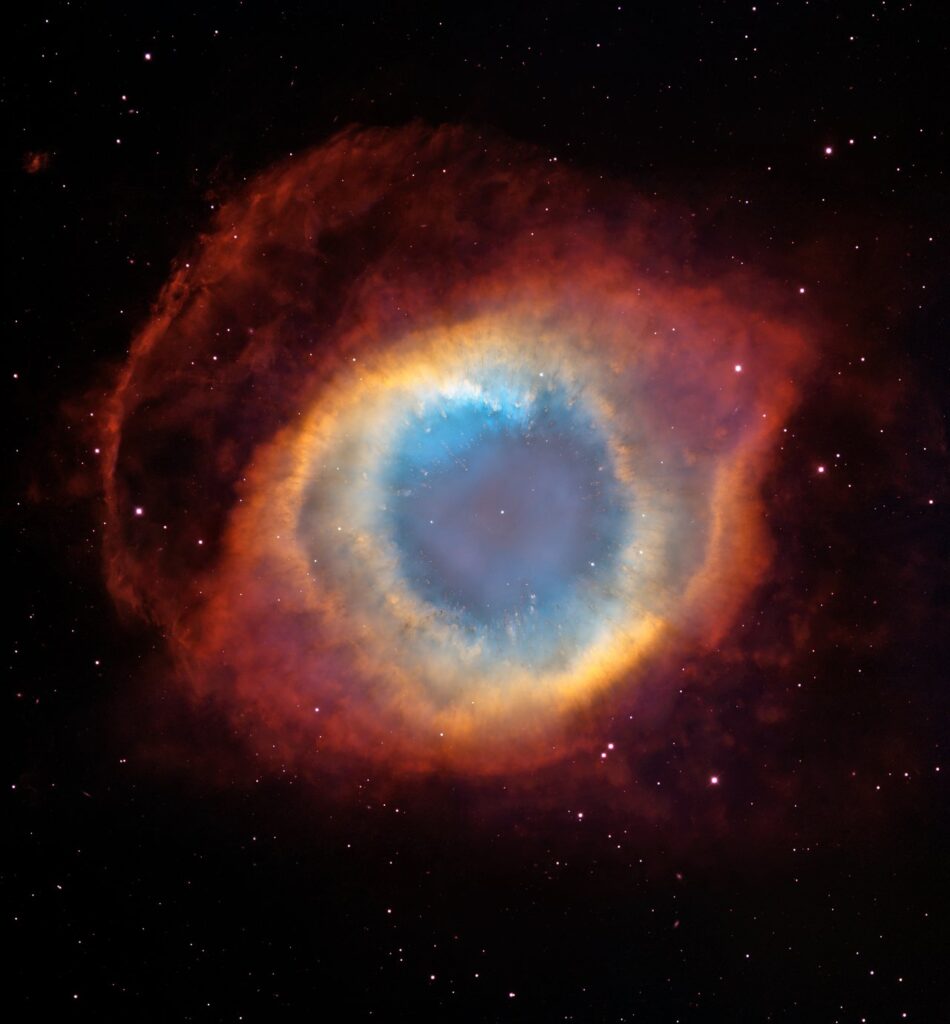Are there submicroscopic worlds within everything we know – and are we submicroscopic within some larger universe?
When I was young, I was enamored with the idea of multiple, or even infinite levels of Universe. I probably got the idea from Disneyland’s Adventure Thru Inner Space. I liked the idea that solar systems or galaxies or maybe whole universes might exist within atoms (See: Conceiving the Inconceivable). But I also allowed that to another larger level, we might be the microscopic universe.
My standard joke was always that maybe we are in the eye of an enormous snail that lives in a larger universe. I used to play with snails, and was fascinated at how if you touched a snail’s eye stalk it would retract, and then extend outward again. The eye and nerve would follow the extension but lag behind a bit (see A snail’s eye).
I thought it was interesting that the writers of Men In Black had a similar idea that they used for the ending of the first movie. Giant alien creatures are playing marbles with galaxies or universes within them, including us.
It turns out that the snail’s eye stalk was a fitting choice. Our “known” part of our universe is expanding. A part of a universe that is expanding in a more linear shape could be an eye stalk that is extending outward. Considering what we think we know about the movements of atoms and subatomic particles, the time scales could be much different. Something that takes place in seconds or minutes in a larger universe might be millions or billions of years in a much smaller universe. So that eye stalk extension might take place over millions of years for tiny worlds within it.
But there are lots of other phenomena that might fit the bill. Maybe our universe is a bucket of water that was just dumped on the floor of some god-scale house. Maybe we are part of a balloon being inflated. Or, maybe we are something exploding! That might fit with the “Big Bang” theory.
Imagine worlds within the submicroscopic realm, all around and in us. Every atom, maybe every subatomic particle contains its own galaxies.
Now, imagine the worlds within an ice cube in a pan. The molecules and atoms are locked into a crystal structure. That could be seen as a static universe (not expanding). Melt that ice cube and the stars and galaxies are free to move about; the universe can expand outward into the pan. If you further heat it to a gas, the expansion is greater and faster, and 3-dimensional.
What about worlds within electric circuits? As we understand it, electrons are passed from one atom to another at about the speed of a fast ant. So what might that look like from inside? Is it like tiny planets ripped from their sun and sent on a galactic trip from one solar system to another?
What might you do differently if you knew that everything you do affects living things in tiny worlds – every snail or fly we smash, every time we pop a balloon, everything we eat, every time we make a fire or start a car, every time we turn on a faucet or flush a toilet? Now, it’s not like we’re killing the living things or destroying their planets or solar systems or galaxies. Killing or smashing things in our own world does not destroy the atoms that make them up.
Well, maybe there is one exception. What happens to galaxies or universes that might be targets in our atomic colliders? Are they ripped apart? Maybe we need to stop smashing atoms, just in case … in case someone’s watching…

Comic sequences by Ken Piper using StoryboardThat (storyboardthat.com).
Featured image by Сколько минут at nixette.livejournal.com. Photographer has modified the eyes for humorous effect.


I loved this. So interesting and thought-provoking. I had to read it a few times to make sure I got all that intricate ideas woven into the piece! And made me laugh at least once. Perfect!